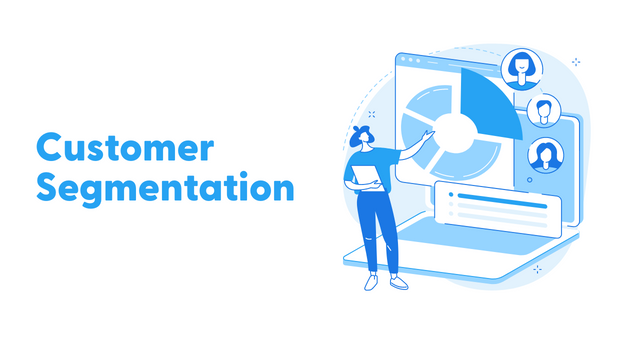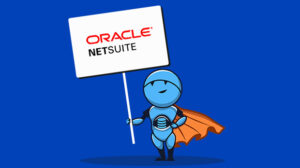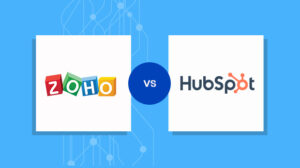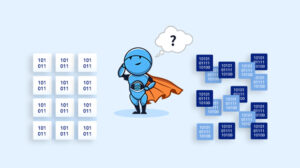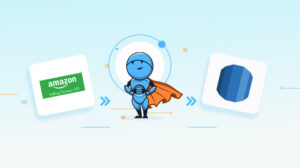Customer segmentation is the process of dividing a customer base into smaller groups of individuals with similar needs or characteristics. This allows a business to create targeted campaigns and tailor products or services to specific segments, thereby enabling data driven marketing.
There are many ways to segment a customer base, and the specific approach taken will depend on the business and its goals. Some common ways to segment customers include:
- Demographic characteristics, such as age, gender, income, and education level
- Geographic location, such as country, region, or city
- Behavioral characteristics, such as purchasing habits and loyalty
- Psychological characteristics, such as values, attitudes, and motivations
To perform customer segmentation, a company will typically gather customer data and use this information to identify common characteristics or needs among different groups. This may involve collecting data through analytics tools, surveys, focus groups, or other research methods.
By understanding the characteristics of different customer segments, businesses can tailor their products, services, and marketing efforts better to meet the needs and preferences of those segments. This can help businesses to attract and retain more customers and ultimately drive growth and success.
Customer Segmentation vs Market Segmentation
Customer segmentation and market segmentation are closely related concepts in marketing that involve dividing a market into smaller groups of consumers based on common characteristics or needs. However, there are some key differences between the two concepts.
Market segmentation involves dividing a market as a whole into smaller groups of consumers with similar needs or characteristics. This can be used to identify opportunities for new products or services, or to target marketing efforts to specific groups of consumers.
While customer segmentation is focused on understanding and meeting the needs of a company’s specific customer base, market segmentation is focused on understanding and meeting the needs of different groups of consumers within a larger market.
Overall, customer segmentation and market segmentation are both useful tools for understanding and meeting the needs of customers, but they are used for different purposes and at different stages of the customer journey.
Customer Segmentation Types and Examples
Five types of customer segmentation are:
- Demographic segmentation
- Behavioral segmentation
- Geographical segmentation
- Psychographic segmentation
- Interest-based segmentation
Also, read – RFM Analysis
| Customer Segmentation Types | Characteristics | Example |
| Demographic segmentation | Dividing customers based on characteristics such as age, gender, income, education, and occupation | A fashion retailer might target young, fashionable women with high disposable incomes, while a home improvement store might target middle-aged men focusing on DIY projects. |
| Behavioral segmentation | Dividing customers based on their behaviors and preferences, such as their purchasing habits, loyalty to the brand, and engagement with the company | A gym might target customers who are regular attendees and have a history of signing up for multiple classes, while a coffee shop might target customers who visit frequently and spend more on specialty drinks. |
| Geographical segmentation | Dividing customers based on where they live, such as by country, region, or city | A clothing company might target customers in urban areas with a focus on trendy fashion, while an outdoor gear retailer might target customers in rural areas with a focus on outdoor activities. |
| Psychographic segmentation | Dividing customers based on their attitudes, values, lifestyles, and personality traits | A luxury car dealership might target customers who value exclusivity and status, while a natural food store might target customers who prioritize health and wellness. |
| Interest-based segmentation | Dividing customers based on their interests or hobbies | A sports apparel company might target avid runners, while a home decor store might target customers interested in interior design. |
Customer Segment Names
There are many ways that companies can name their customer segments, and the specific names used will depend on the criteria used for segmentation and the goals of the company. Some common examples of customer segment names include:
- Demographic segments: These segments are based on characteristics such as age, gender, income, education level, etc. Examples of demographic segments might include “millennials,” “baby boomers,” or “high-income earners.”
- Geographic segments: These segments are based on location, and could include segments such as “urban dwellers,” “suburban residents,” or “rural communities.”
- Behavioral segments: These segments are based on consumer behavior or attitudes, and could include segments such as “loyal customers,” “frequent shoppers,” or “brand advocates.”
- Psychographic segments: These segments are based on consumers’ values, attitudes, and lifestyles. Examples of psychographic segments might include “outdoor enthusiasts,” “tech-savvy consumers,” or “sustainability-minded individuals.”
It is important to choose segment names that accurately reflect the characteristics of the segment and that are easy for the company and its employees to understand and use.
Benefits of Customer Segmentation
- Improved Retention: By segmenting customers into different groups, companies can tailor their retention strategies to better meet the specific needs and preferences of each segment, leading to higher customer retention.
- Reduced Churn: Customer segmentation allows companies to identify at-risk segments and target them with specific retention efforts, reducing overall customer churn.
- Increased Revenue: By focusing on high-value segments, companies can increase sales and revenue by identifying and targeting the most profitable customers. Read more: Cohort Analysis
- Improved Marketing Efficiency: By tailoring marketing campaigns to specific segments, companies can improve the efficiency of their marketing spend, resulting in higher ROI. Read more: Data driven marketing
- Better Product Development: Customer segmentation can also inform product development by identifying the needs and preferences of different segments, allowing companies to create products and services that better meet the needs of their customers.
- Increased Personalization: By understanding the needs and preferences of different segments, companies can personalize their interactions with customers, leading to a better customer experience and stronger customer loyalty. Read more: Customer Analytics
How to do Customer Segmentation
Customer segmentation in six steps:
- Define your target market: Identify the specific group of customers you want to target with your marketing efforts. This will help you focus your segmentation efforts and ensure that you are reaching the right audience.
- Gather customer data: Use various methods, such as surveys, focus groups, and online analytics, to gather data about your customers. This information should include demographics, behavior, and preferences. You can use APIs, data pipelines to connect data sources to a central data warehouse. Also, read – Modern Data Stack
- Analyze the data: Use your gathered information to identify patterns and trends in your customer data. Look for common characteristics and behaviors among different groups of customers. Also, read – Customer Data Platform
- Identify segmentation variables: Select the variables that will be most relevant for your marketing efforts. These might include demographics, behavior, and preferences.
- Create segment profiles: Use your identified segmentation variables to create detailed profiles of each segment within your target market. These profiles should include information about each segment’s characteristics, behavior, and preferences.
- Develop targeted marketing campaigns: Use the segment profiles you have created to develop targeted marketing campaigns that speak directly to each segment’s characteristics, behavior, and preferences. This will help ensure that your marketing efforts are more effective and resonant with your target audience.
Methods of Customer Segmentation
- Surveys and questionnaires: Surveys and questionnaires are a common customer segmentation method. They involve asking customers a series of questions about their demographics, preferences, buying habits, and satisfaction levels. This information can then be used to segment customers into different groups based on their responses. Surveys can be conducted in person, over the phone, or online.
- Focus groups: Focus groups involve gathering a small group of customers together to discuss a particular product or service. The group is usually led by a moderator who guides the discussion and asks questions. The information gathered from focus groups can be used to segment customers based on their opinions and attitudes towards a product or service.
- Behavioral tracking: Behavioral tracking involves collecting data on how customers interact with a company’s website, social media pages, and mobile app. This data can be used to segment customers based on their online behavior, such as the pages they visit, the products they view, and their actions.
- Social media analysis: Social media analysis involves studying customer interactions and conversations on social media platforms. This can include analyzing comments, likes, shares, and other forms of engagement. The information gathered can be used to segment customers based on their interests, preferences, and opinions.
- Data mining and analysis: Data mining and analysis involves using software tools to analyze large amounts of data from a variety of sources, such as customer databases, sales records, and website logs. This information can be used to segment customers based on their demographics, buying habits, and other characteristics. Data mining and analysis can also be used to identify patterns and trends in customer behavior.
Overall, customer segmentation requires a combination of data gathering and analysis to identify and understand different segments within a customer base. By following these steps, companies can create targeted marketing campaigns that are more likely to resonate with their target audience and drive business growth.
Customer Segmentation Case Studies
Here are a few examples of customer segmentation case studies:
- A clothing retailer has identified that their customer base can be segmented into three groups: young professionals, young families, and seniors. They use this information to create targeted marketing campaigns and in-store experiences for each segment. For example, they might have a sale on professional attire for young professionals and host a family-friendly event for young families.
- A hotel chain has found that its customer base can be segmented into two groups: business travelers and vacationers. They use this information to create different types of packages and promotions for each segment. For example, they might offer a discounted rate for a week-long stay for vacationers while offering a reduced rate for a single-night stay for business travelers.
- A software company has identified that their customer base can be segmented into three groups: small businesses, mid-sized companies, and enterprise organizations. They use this information to create customized pricing and support plans for each segment. For example, they might offer a lower price and more flexible contract terms for small businesses, while offering more comprehensive support and a higher price for enterprise organizations.
Importance of Customer Segmentation in eCommerce
Segmentation is an important aspect of eCommerce because it allows businesses to tailor their marketing efforts and strategies to specific groups of customers. By segmenting their customer base, businesses can better understand the needs and preferences of each group and create targeted campaigns that are more likely to be successful.
Segmentation is used to optimize the customer experience by personalizing recommendations, messaging, and other aspects of the website or shopping journey. This can help to increase loyalty and retention rate, as well as improve overall sales and profitability.
Here are a few examples of customer segmentation case studies in eCommerce:
- An online home goods retailer has identified that their customer base can be segmented into three groups: urban dwellers, suburban residents, and rural residents. They use this information to create targeted marketing campaigns and curate their product selection for each segment. For example, they might promote compact furniture options for urban dwellers and feature hardy cost-effective products for rural residents.
- A fashion eCommerce site has found that its customer base can be segmented into two groups: trend-conscious shoppers and classic-style shoppers. They use this information to create different marketing campaigns and product recommendations for each segment. For example, they might feature edgy, on-trend items in their email newsletters for trend-conscious shoppers while showcasing timeless pieces in their recommendations for classic-style shoppers.
- A beauty eCommerce site has identified that its customer base can be segmented into three groups: makeup enthusiasts, skincare aficionados, and wellness seekers. They use this information to create customized landing pages and product bundles for each segment. For example, they might create a landing page featuring a curated selection of makeup products for makeup enthusiasts and a bundle of skincare products for skincare aficionados.
Read more: Pricing Strategy
Customer Segmentation in SaaS Businesses
Customer segmentation can be a valuable tool for a SaaS (software as a service) business, as it allows the company to tailor its marketing efforts and product offerings better to meet the needs of specific groups of customers.
There are several ways that a SaaS business can segment its customers, including by:
- Industry: Different industries may have different needs and preferences when it comes to software, so it can be helpful to create segments based on the industry in which customers work. For example, a SaaS business might create separate segments for customers in the healthcare industry, the financial industry, and the manufacturing industry.
- Company size: The size of a customer’s company may impact their needs and preferences regarding software, so it can be helpful to create segments based on company size. For example, a SaaS business might create separate segments for small, medium-sized, and large enterprises.
- Usage: Customers who use the software frequently may have different needs and preferences than those who use it less often, so it can be helpful to create segments based on usage patterns. For example, a SaaS business might create segments for heavy, moderate, and light users.
- Needs: Customers may have different needs and goals when it comes to using software, so creating segments based on these needs can be helpful. For example, a SaaS business might create separate segments for customers who need software for project management, customers who need software for customer relationship management, and customers who need software for financial management.
Challenges in Implementing Customer Segmentation
There are a few challenges that businesses may face when implementing customer segmentation:
- Data collection: To accurately segment customers, businesses need to have access to a large amount of data. This may require investing in tools and systems to track and analyze customer data, such as website analytics platforms or customer relationship management (CRM) software.Read more: Data Warehousing
- Changing demographics: Customer demographics can change over time, making it difficult to maintain accurate segmentation. For example, a young professional customer one year may become a young family the next year. Businesses need to continuously monitor and update their segmentation to ensure that it remains accurate.
- Overlapping segments: It is possible for customers to belong to multiple segments based on different characteristics. For example, a customer who is a high-income earner may also be a senior citizen. This can make it challenging to determine the most appropriate marketing and sales efforts for these customers.
- Limited resources: Segmenting customers requires significant time and resources. Businesses must carefully consider whether customer segmentation’s benefits outweigh the costs before implementing it.
- Privacy concerns: Customers may be hesitant to share their personal information with businesses due to privacy concerns. This can make it difficult for businesses to obtain the data needed for customer segmentation. Businesses should strive to be transparent about how they collect and use customer data and to obtain customer consent when necessary.
Customer Segmentation as a pre-requisite for CRM
Customer segmentation is often a prerequisite for implementing a customer relationship management (CRM) system. A CRM system is a software platform that helps companies to manage and analyze customer interactions and data throughout the customer lifecycle, to improve customer relationships and drive business growth.
Before implementing a CRM system, it is important for a company to have a clear understanding of its customer base and to have segmented its customers into different groups with similar needs or characteristics. This allows the company to tailor its marketing efforts and product offerings better to meet the needs of specific customer groups and optimize resource allocation.
Once the customer segments have been identified, a company can use a CRM system to track and manage interactions with each segment and analyze customer behavior, preferences, and needs. This can help the company to engage with its customers more effectively and to build stronger relationships with them.
Overall, customer segmentation is an important precursor to implementing a CRM system, as it helps a company better understand and meet its customers’ needs and manage and analyze customer data effectively.
Customer Segmentation vs Cohort Analysis
Customer segmentation and cohort analysis are both marketing techniques used to better understand and target specific customer groups.
Customer segmentation involves dividing a customer base into smaller groups based on characteristics such as demographics, behavior, or values.
Cohort analysis, on the other hand, involves grouping customers based on when they first became a customer (i.e. the cohort they belong to). This allows businesses to track customers’ behavior and purchasing patterns over time and identify changes or trends within each cohort.
Both techniques can be used together to gain a more complete understanding of a customer base. For example, a business may use customer segmentation to identify different groups of customers based on demographics and then use cohort analysis to track each demographic group’s behavior and purchasing patterns over time.
Customer Segmentation and Targeting
Customer segmentation and targeting are two closely related concepts in marketing. Customer segmentation divides a market into smaller consumer groups with common needs or characteristics. This allows a company to tailor its marketing efforts and product offerings better to meet the needs of specific groups of consumers.
On the other hand, targeting involves selecting one or more specific customer segments as the focus of a marketing campaign or product offering. Targeting involves identifying the specific needs and characteristics of a particular customer segment and creating marketing messages or products that are tailored to meet those needs.
For example, a company might use customer segmentation to identify several different groups of customers with different needs or characteristics, such as “tech-savvy millennials,” “outdoor enthusiasts,” and “high-income earners.” The company could then use targeting to select one or more of these segments as the focus of a marketing campaign or product launch, and create marketing messages or products that are specifically tailored to meet the needs of those segments.
Read more: Predictive Analytics
Customer Segmentation vs Profiling
Customer segmentation and profiling are two related concepts in marketing that involve dividing a market into smaller groups of consumers based on common characteristics or needs. However, there are some key differences between the two concepts.
Customer profiling involves creating a detailed profile or “picture” of a specific customer or group of customers. This profile includes information on the customer’s characteristics, needs, preferences, and behavior and is used to understand and meet the needs of that customer or group.
While customer segmentation is typically used to create broad groups of customers with similar characteristics, customer profiling is focused on understanding and meeting the needs of a specific customer or group of customers.
Overall, customer segmentation and profiling are both useful tools for understanding and meeting the needs of customers, but they are used for different purposes and at different stages of the customer journey. Customer segmentation is often used to identify broad groups of customers with similar needs or characteristics, while customer profiling is used to create a detailed understanding of the needs and preferences of a specific customer or group of customers.
Customer Segmentation vs User Personas
Customer segmentation and user personas are two related concepts in marketing that involve dividing a market into smaller groups of consumers based on common characteristics or needs. However, there are some key differences between the two concepts.
User personas are fictional characters representing specific users or customers within a target market. They are created based on research and data about these users’ characteristics, needs, and behaviors, and are used to help companies understand and meet the needs of those users.
User personas are often used in the product development process to help companies design products and features that meet the needs of specific groups of users. They can also be used in marketing to create targeted marketing messages and campaigns that speak to the specific needs and characteristics of different user groups.
Customer segmentation is often used to identify broad groups of customers with similar needs or characteristics, while user personas are used to create a detailed understanding of the needs and preferences of specific groups of users or customers.
Can Market Segmentation be taken too far
Yes, market segmentation can be taken too far. While market segmentation can be a useful tool for companies to understand better and meet the needs of their customers, it is important to ensure that segmentation is not used in a way that is unethical or harmful to consumers.
One potential problem with market segmentation is that it can lead to oversimplifying consumer needs and characteristics. This can result in a lack of diversity in marketing efforts and a failure to consider the complexity and individuality of consumers.
Another potential problem with market segmentation is that it can be used to discriminate against certain groups of consumers. For example, if a company uses segmentation to exclude certain groups of consumers based on characteristics such as race, ethnicity, or age, this could be considered unethical and potentially illegal.
It is important for companies to use market segmentation in a responsible and ethical manner, and to consider the potential impact on all consumers, not just those in specific segments.
What criteria can’t be used to create a customer segment
Several criteria cannot be used to create a customer segment, as they are illegal or unethical to consider. Depending on the legal provisions in places, these can include:
- Race: It is illegal to discriminate against someone based on their race, and so it is not acceptable to create customer segments based on race.
- Ethnicity: Like race, it is illegal to discriminate against someone based on their ethnicity, and so it is not acceptable to create customer segments based on ethnicity.
- Gender: It is illegal to discriminate against someone based on their gender, and so it is not acceptable to create customer segments based on gender.
- Sexual orientation: It is illegal to discriminate against someone based on their sexual orientation, and so it is not acceptable to create customer segments based on sexual orientation.
- Age: It is illegal to discriminate against someone based on their age, and so it is not acceptable to create customer segments based on age, unless the age is relevant to the product or service being offered.
- Religion: It is illegal to discriminate against someone based on their religion, and so it is not acceptable to create customer segments based on religion.
It is important to remember that all customer segments should be created in a way that is legal, ethical, and respectful of the rights and dignity of all individuals.
Customer Segmentation Tools
Various tools and software can be used to conduct customer segmentation. These tools can help companies gather, analyze, and visualize customer data to identify different segments within their target market. Some common customer segmentation tools include:
- Customer relationship management (CRM) software: CRM software manages customer interactions and data throughout the customer lifecycle. It can be used to gather customer data, such as demographics, behavior, and preferences, and to segment customers based on this data.
- Data analytics & visualization tools: Tools like Google Analytics and Tableau can be used to analyze customer data and identify patterns and trends. This can help companies identify different segments within their target market based on characteristics such as demographics, behavior, and preferences.
- Survey tools: Survey tools, such as SurveyMonkey and Google Forms, can be used to gather customer data through online surveys. This data can then be used to segment customers based on their responses.
- Customer segmentation software: Specialized software tools, such as BlueConic and Segment, are specifically designed for customer segmentation. These tools can help companies gather, analyze, and visualize customer data to identify different segments within their target market.
Customer Segmentation using Machine Learning
Machine learning can be used to support customer segmentation by automating the process of analyzing customer data and identifying patterns and trends that may not be immediately apparent to human analysts. This can help companies to identify customer segments more accurately and efficiently.
Several machine learning techniques can be used for customer segmentation, including clustering algorithms, decision trees, and neural networks. These algorithms can analyze large amounts of customer data and identify patterns and relationships that can be used to create segments.
Also, read:
- Customer Analytics
- Realtime Analytics
- Marketing Analytics
- eCommerce Analytics
- Subscription Analytics
For example, a company might use a clustering algorithm to analyze customer data such as demographics, purchase history, and product preferences. The algorithm might identify several clusters of customers with similar characteristics, which could then be used to create customer segments.
Using machine learning for customer segmentation can help companies to identify and understand their customer base to drive better marketing campaigns and product offerings more accurately. However, it is important to ensure that the data used for customer segmentation is accurate and representative, and that any segments created are used in a responsible and ethical manner.
Using a Data Warehouse for Customer Segmentation
Consolidating all data in a data warehouse can help with customer segmentation and various other use cases. A data warehouse is a centralized data repository used for data analysis and reporting. By consolidating all of a company’s data in a data warehouse, it becomes easier to analyze and understand customer behavior and preferences, which can be useful for customer segmentation.
Having all data in a single location also makes it easier to create a holistic profile of a company’s profitability, attribution, and ROI. For example, a company could use data from multiple sources, such as sales, customer, and marketing data, to understand which products or marketing campaigns are the most profitable and where the best opportunities for growth lie.
In addition, a data warehouse can help a company visualize the customer journey map and identify opportunities to improve the customer experience. For example, a company could use data from a data warehouse to understand how customers interact with different channels (e.g. website, social media, email) and identify areas where the customer experience could be improved.
There are several benefits to consolidating all data in a data warehouse
- Improved data quality: By storing all data in a centralized location, companies can improve the quality of their data by standardizing data definitions, removing duplicate records, and ensuring data is accurately and consistently captured.
- Enhanced data security: A data warehouse can provide a secure, centralized location for storing data, which can help reduce the risk of data breaches and protect sensitive information.
- Increased efficiency: Consolidating data in a data warehouse can help streamline data management processes and reduce the time and resources needed to access and analyze data.
- Enhanced data accessibility: By storing all data in a single location, companies can make it easier for different teams and departments to access and analyze data, improving collaboration and decision-making.
- Greater scalability: As a company grows and generates more data, a data warehouse can scale to meet the increased data needs, ensuring that the company can continue to access and analyze data effectively.
Overall, consolidating all data in a data warehouse can provide many benefits to companies, including improved data quality, enhanced data security, increased efficiency, enhanced data accessibility, and greater scalability.
Conclusion
In conclusion, customer segmentation is a crucial strategy for identifying and targeting your most profitable customers.
Partnering with a company like Saras Analytics can provide the necessary support and expertise to set up a strong data foundation, track and analyze customer behavior, and ultimately drive growth for your business.
Contact us today to learn how we can help take your customer segmentation efforts to the next level.
